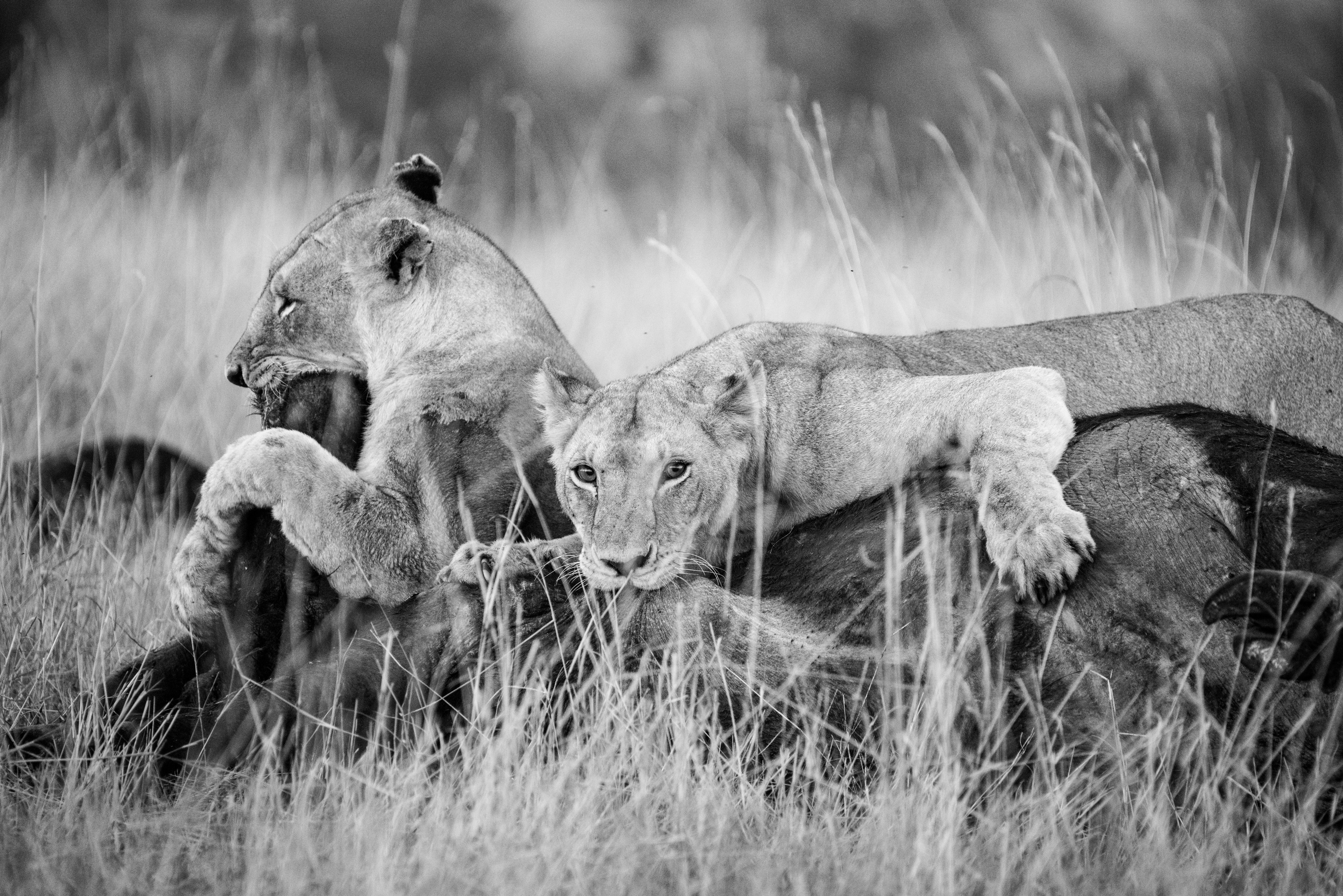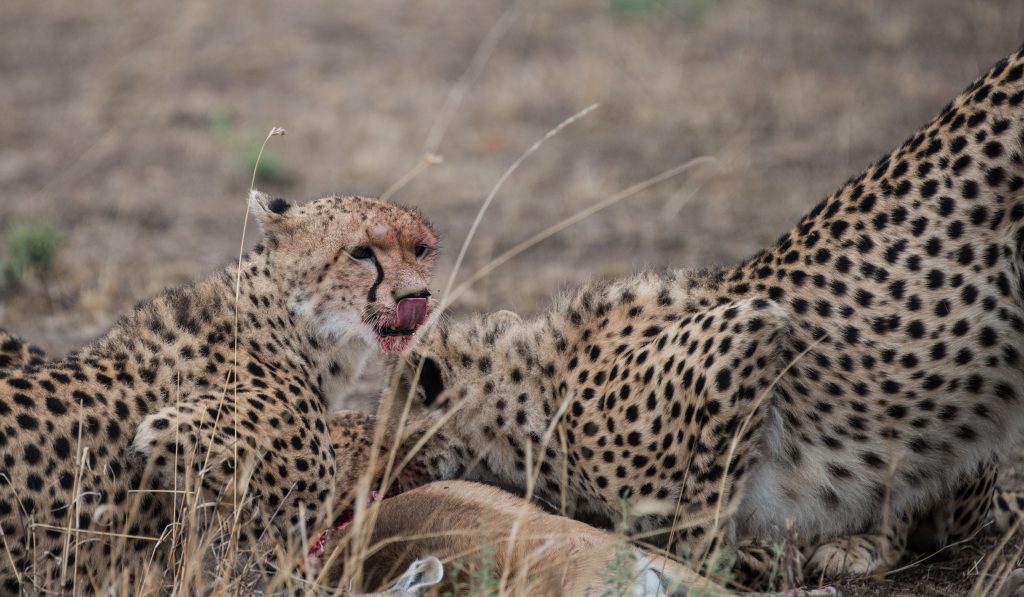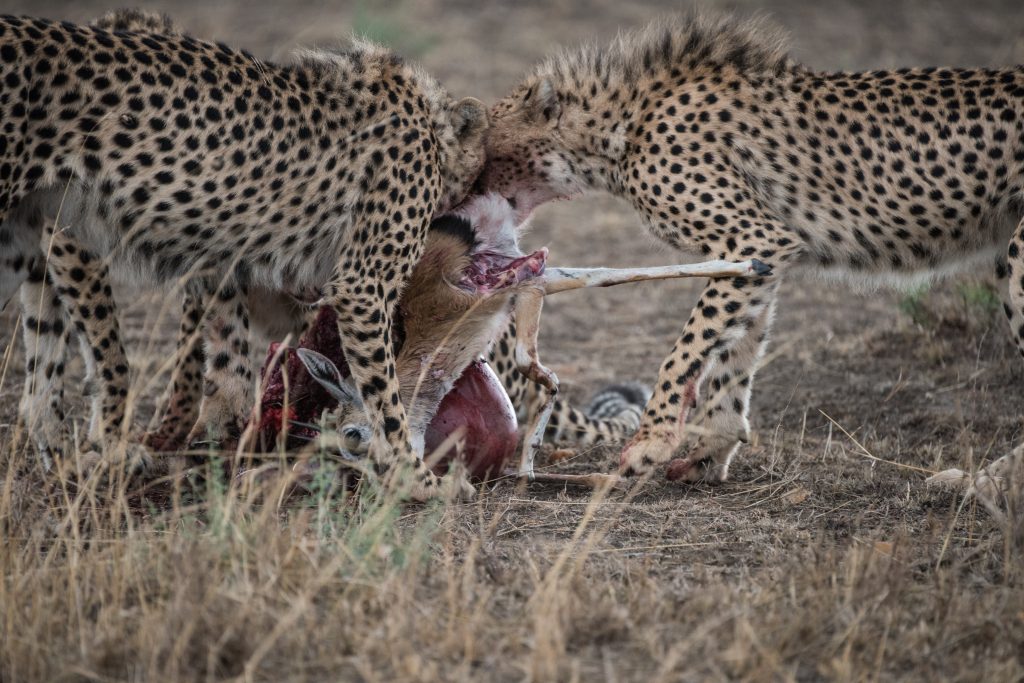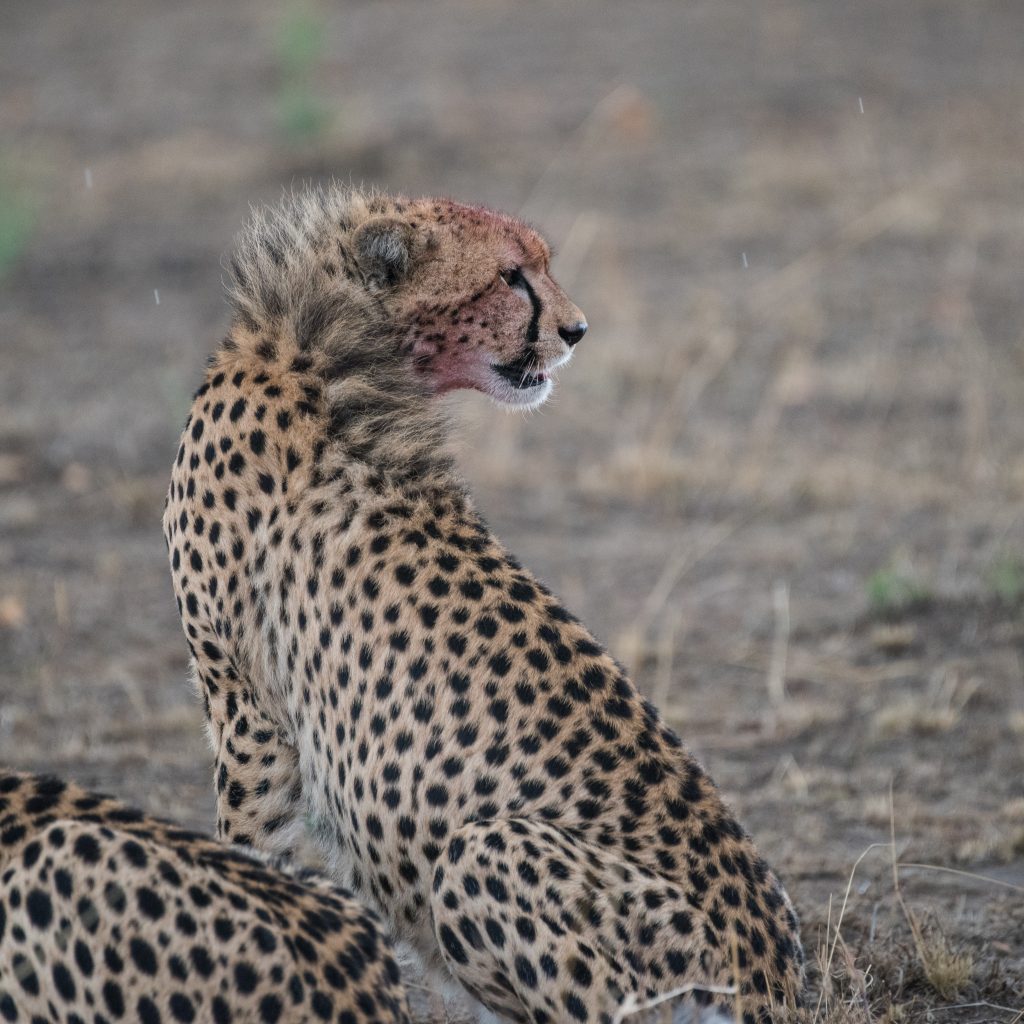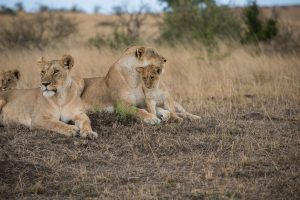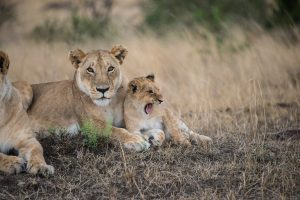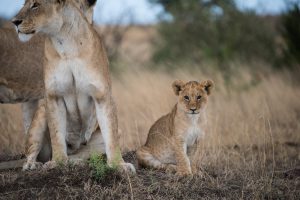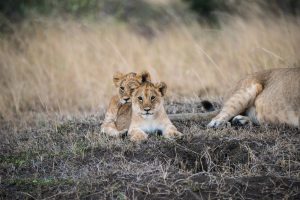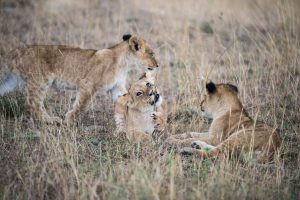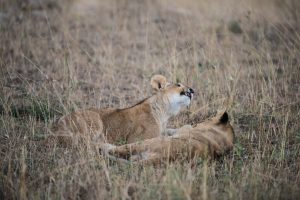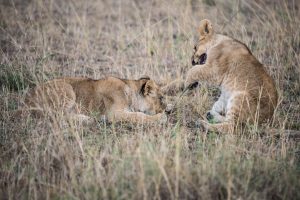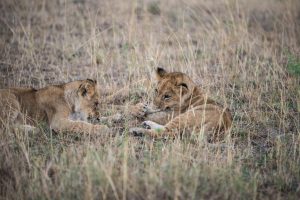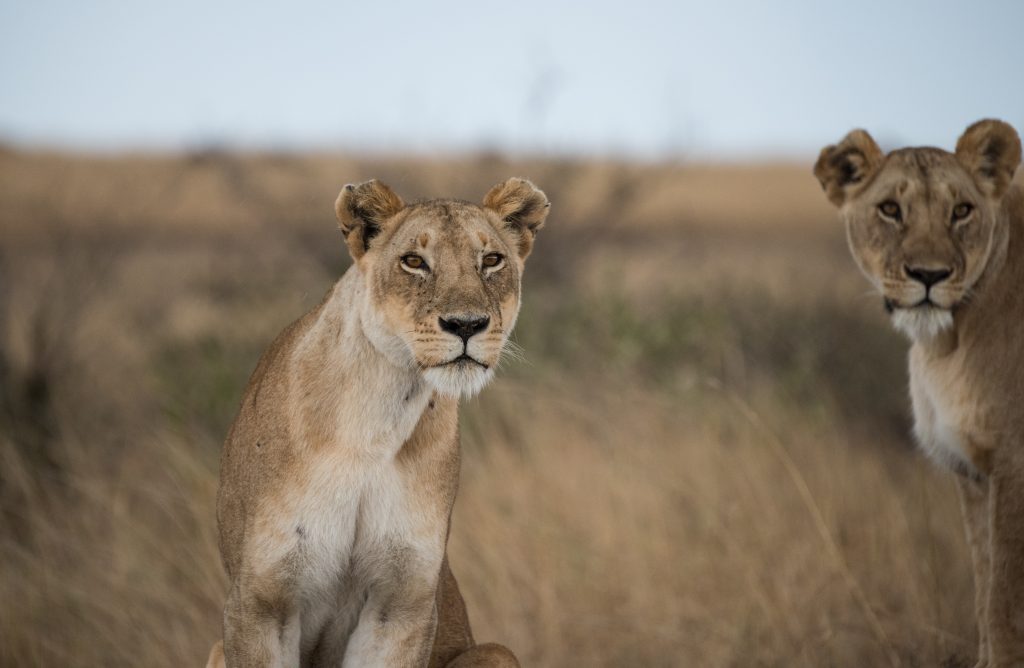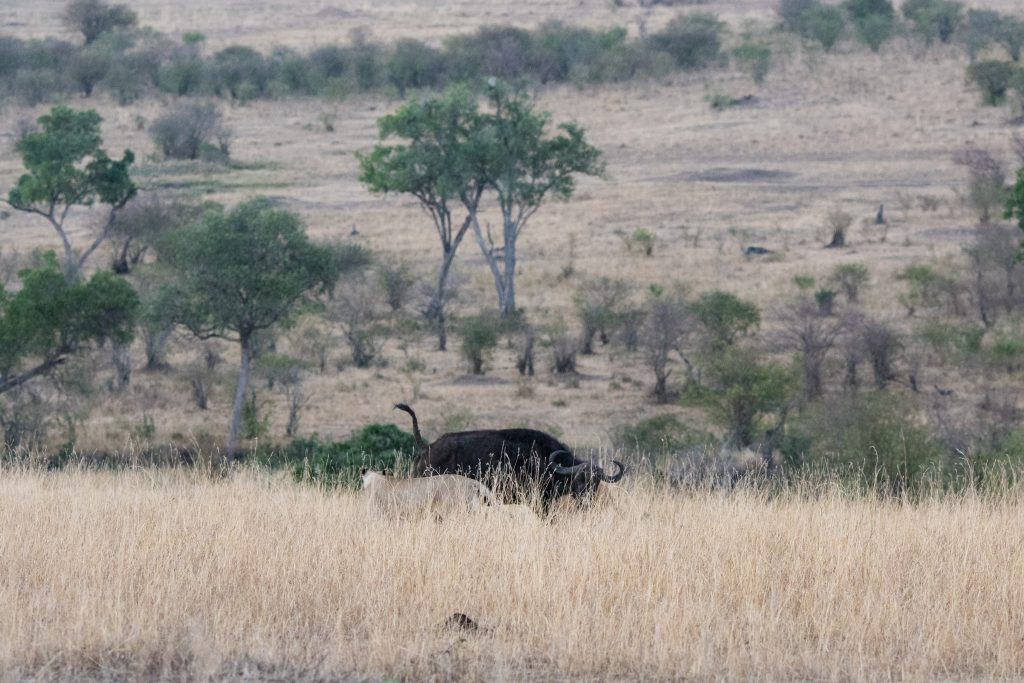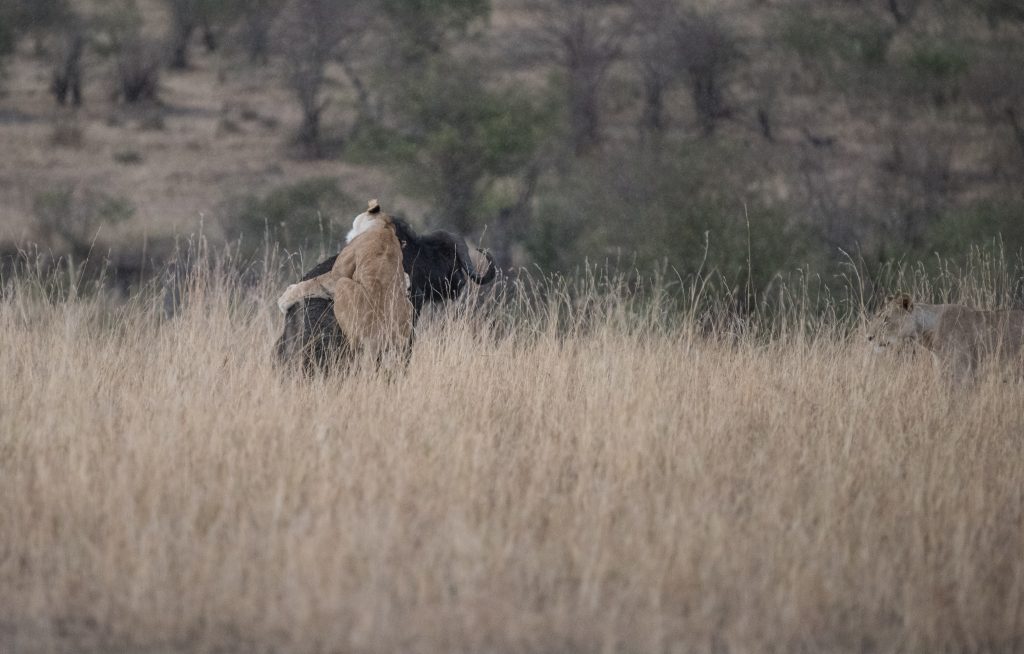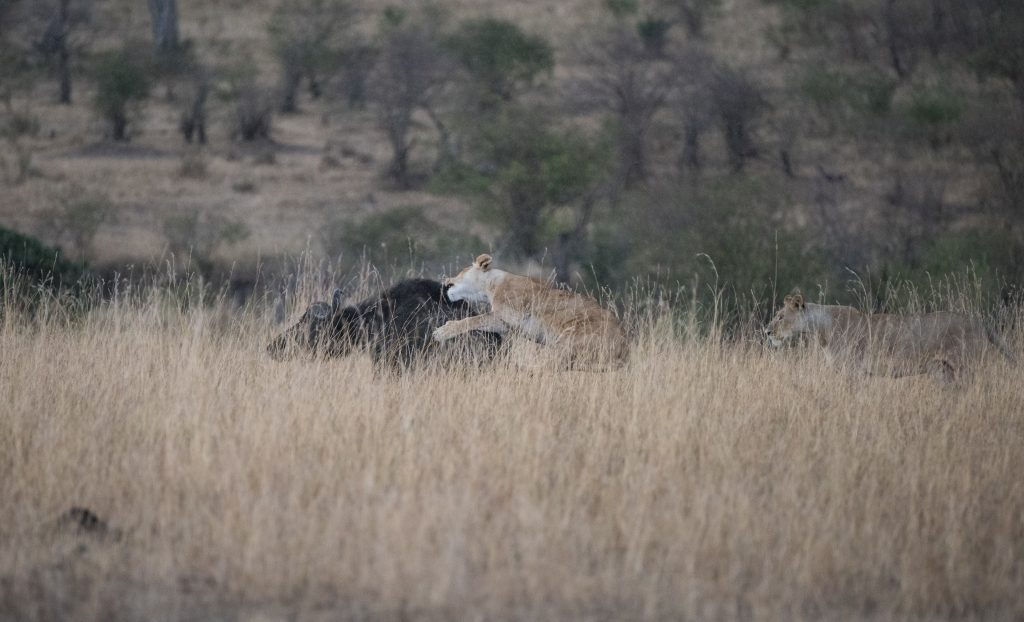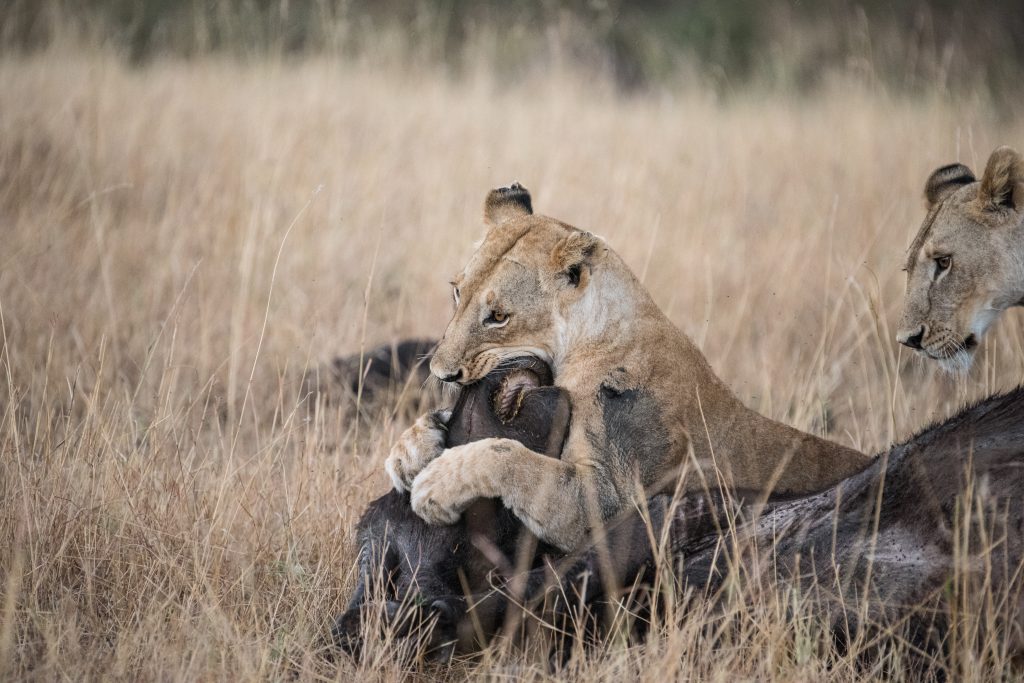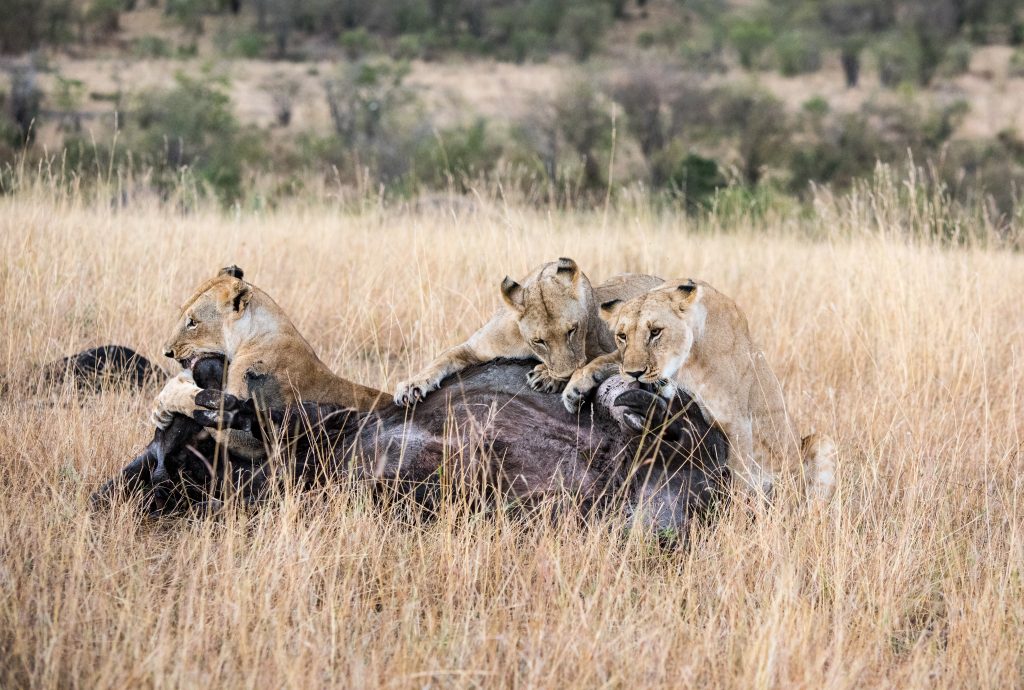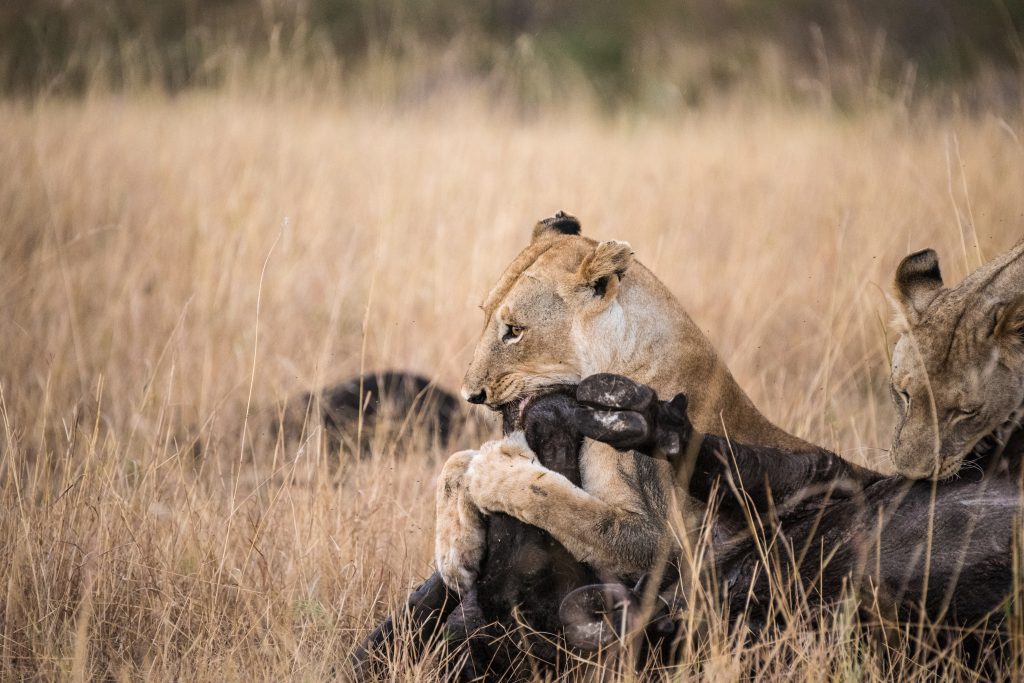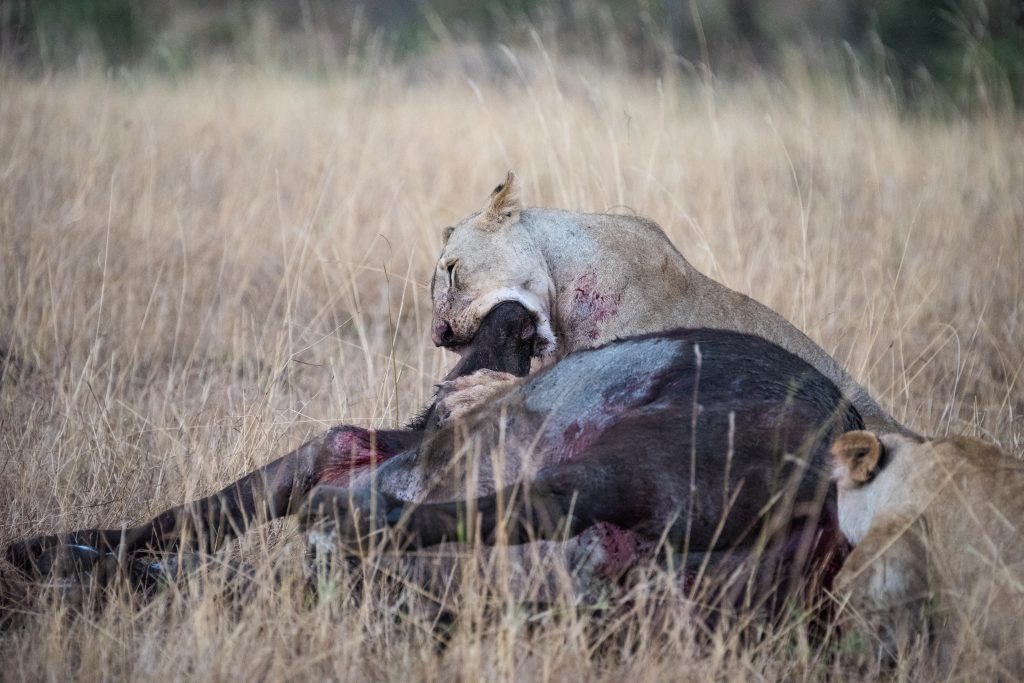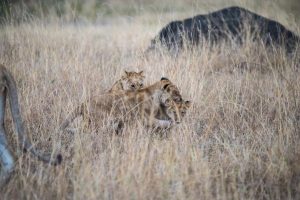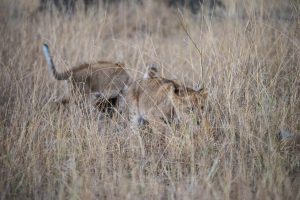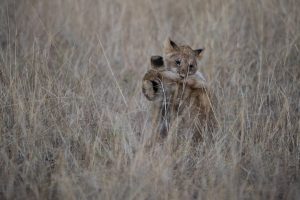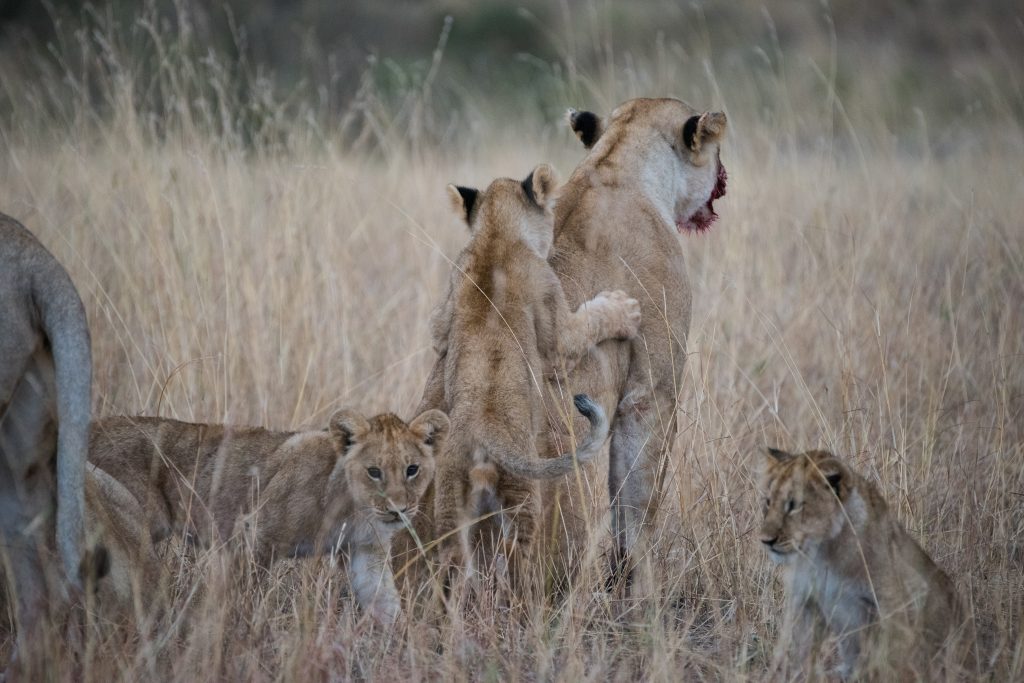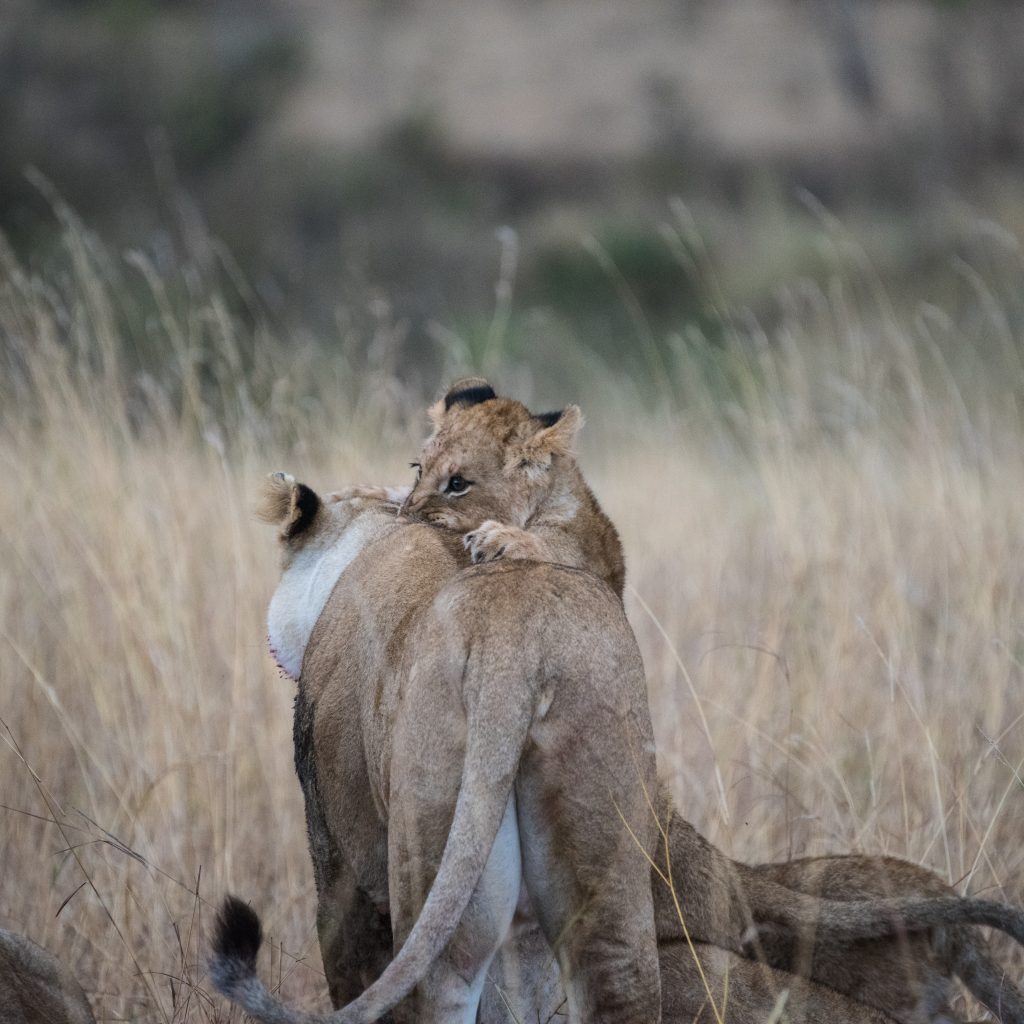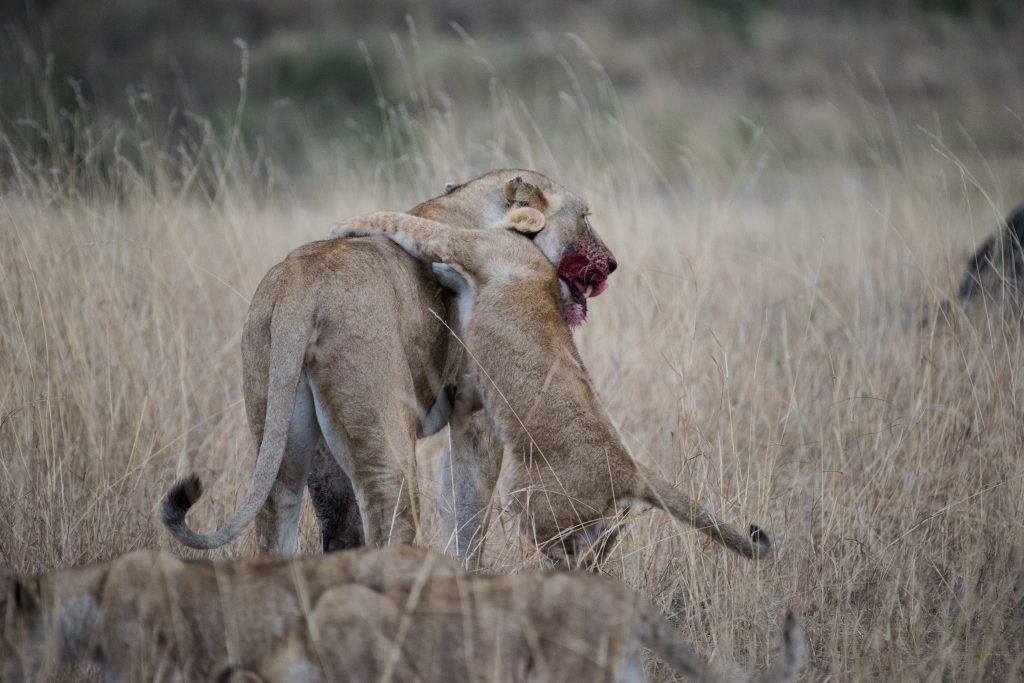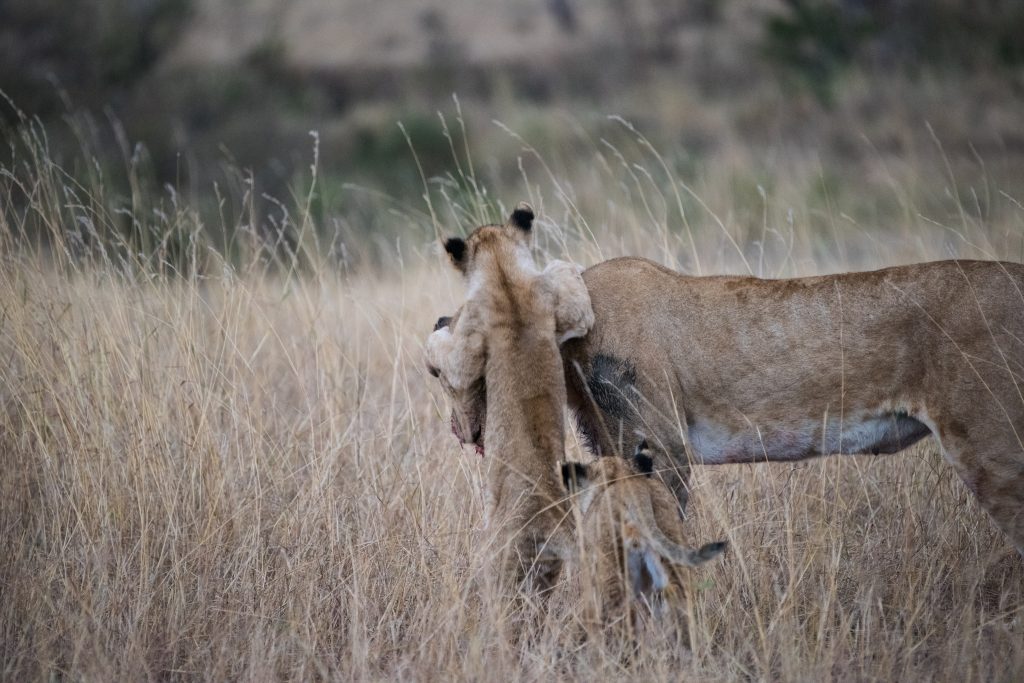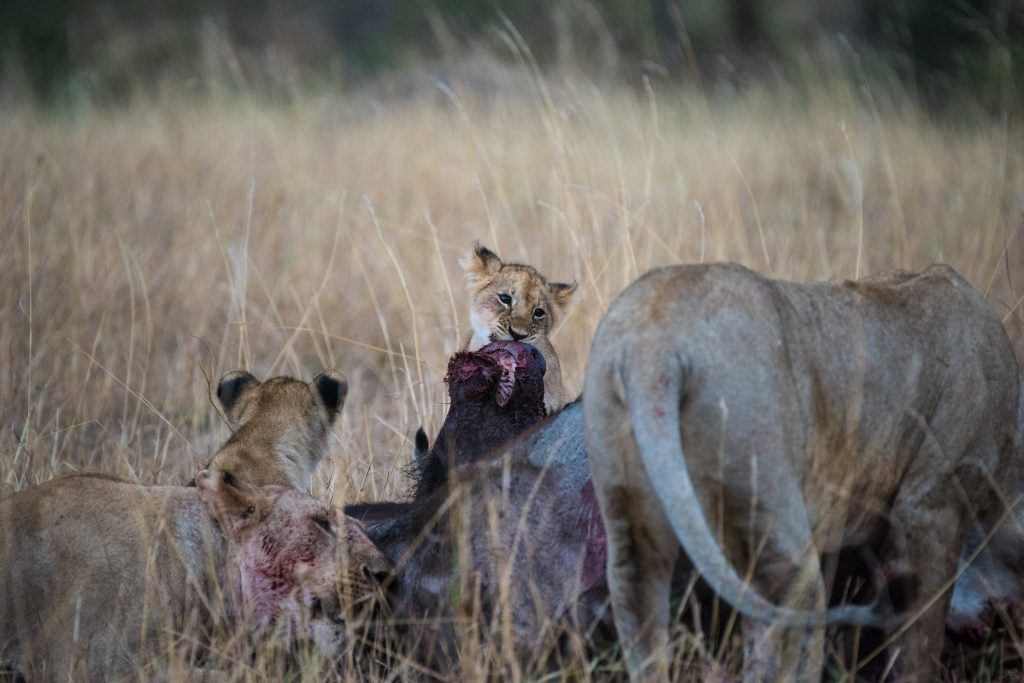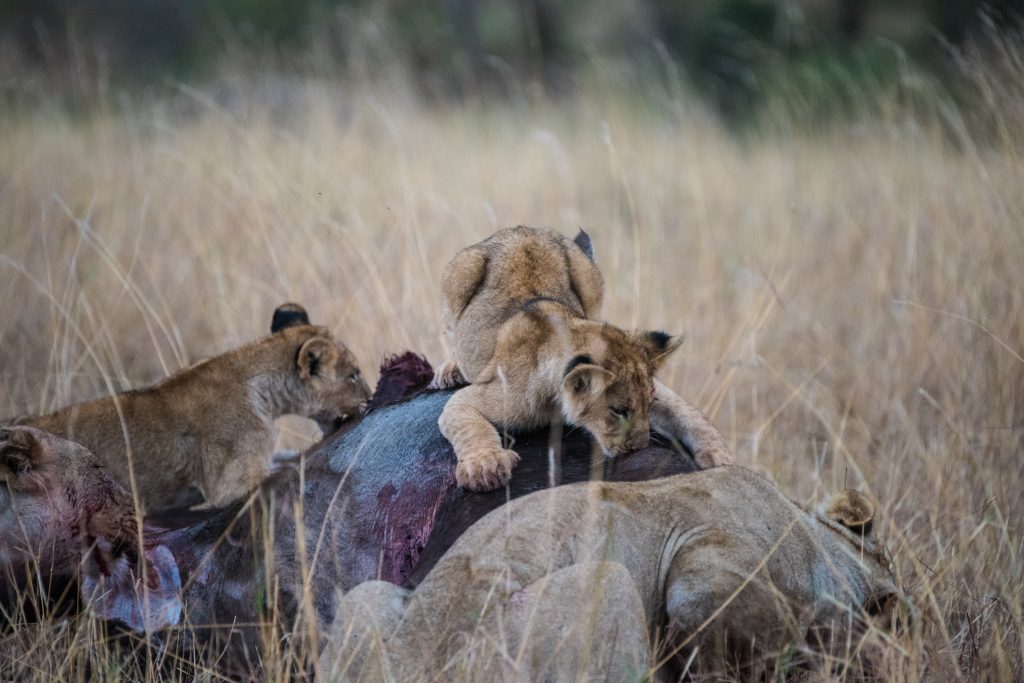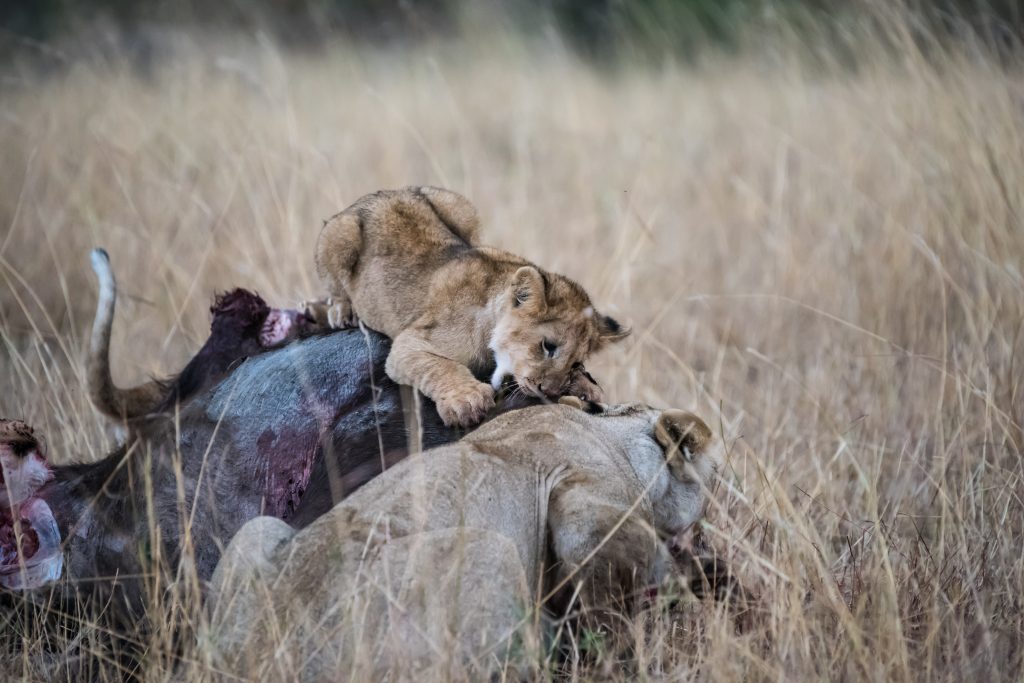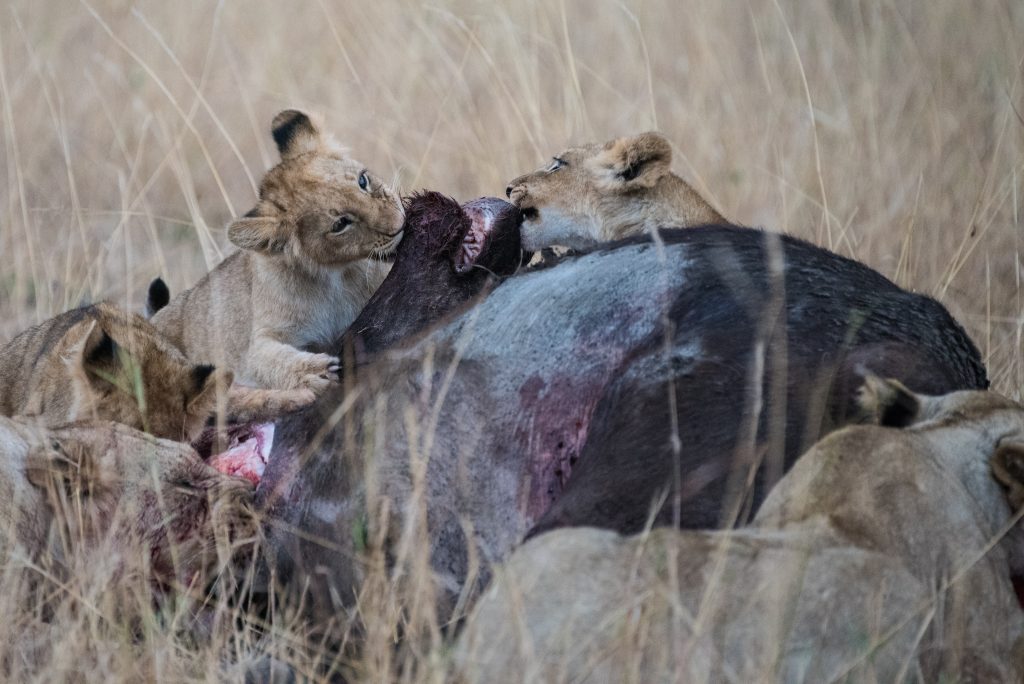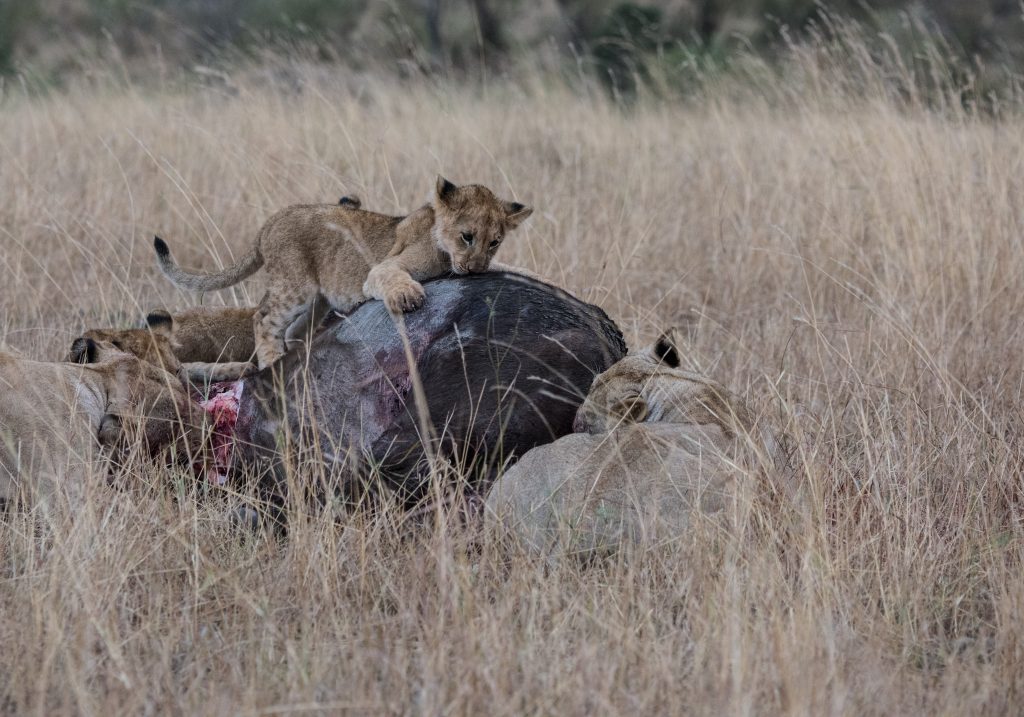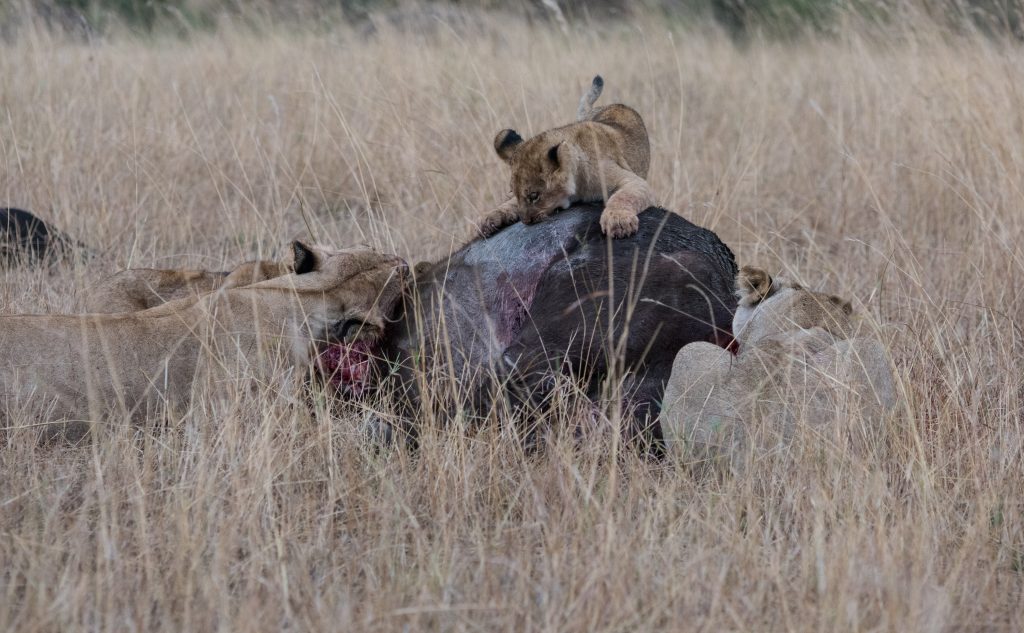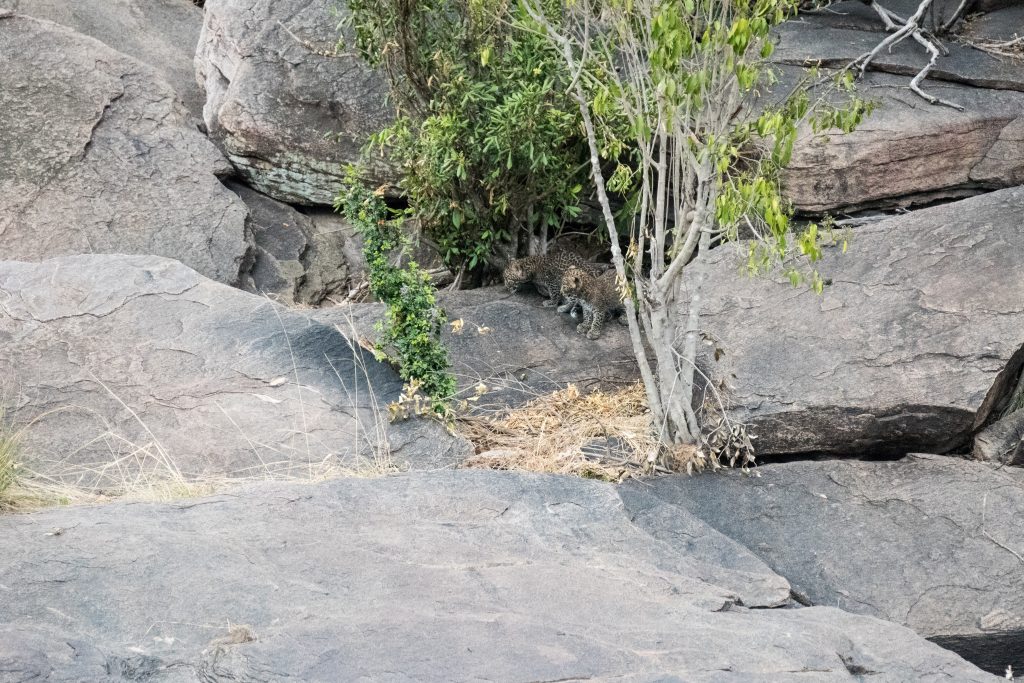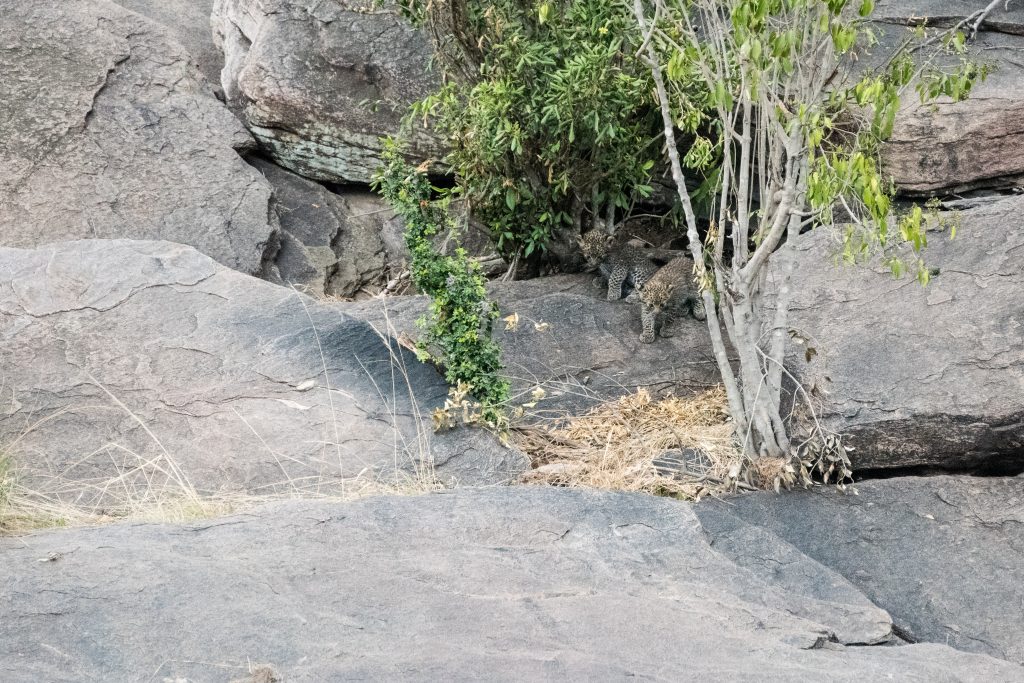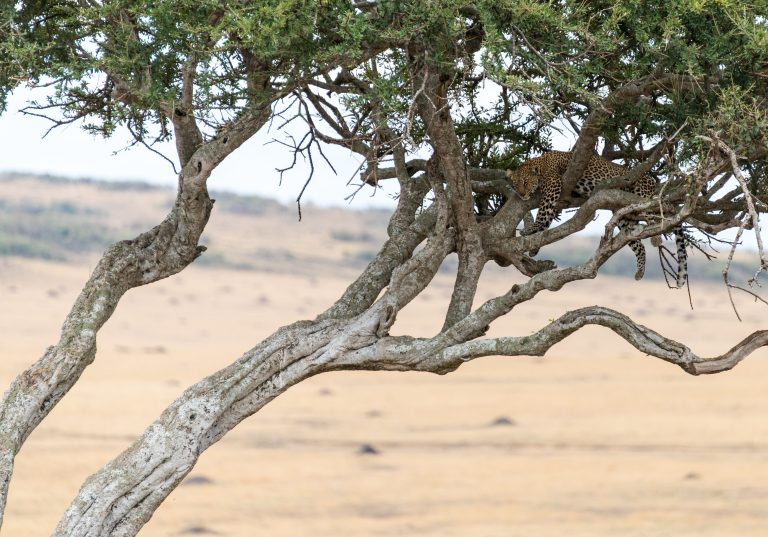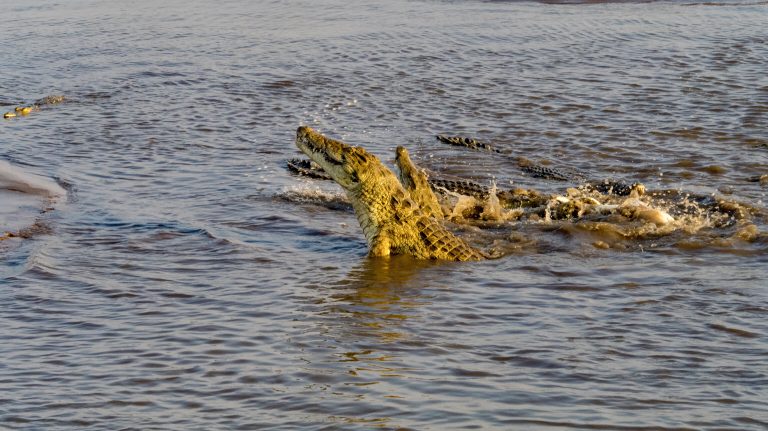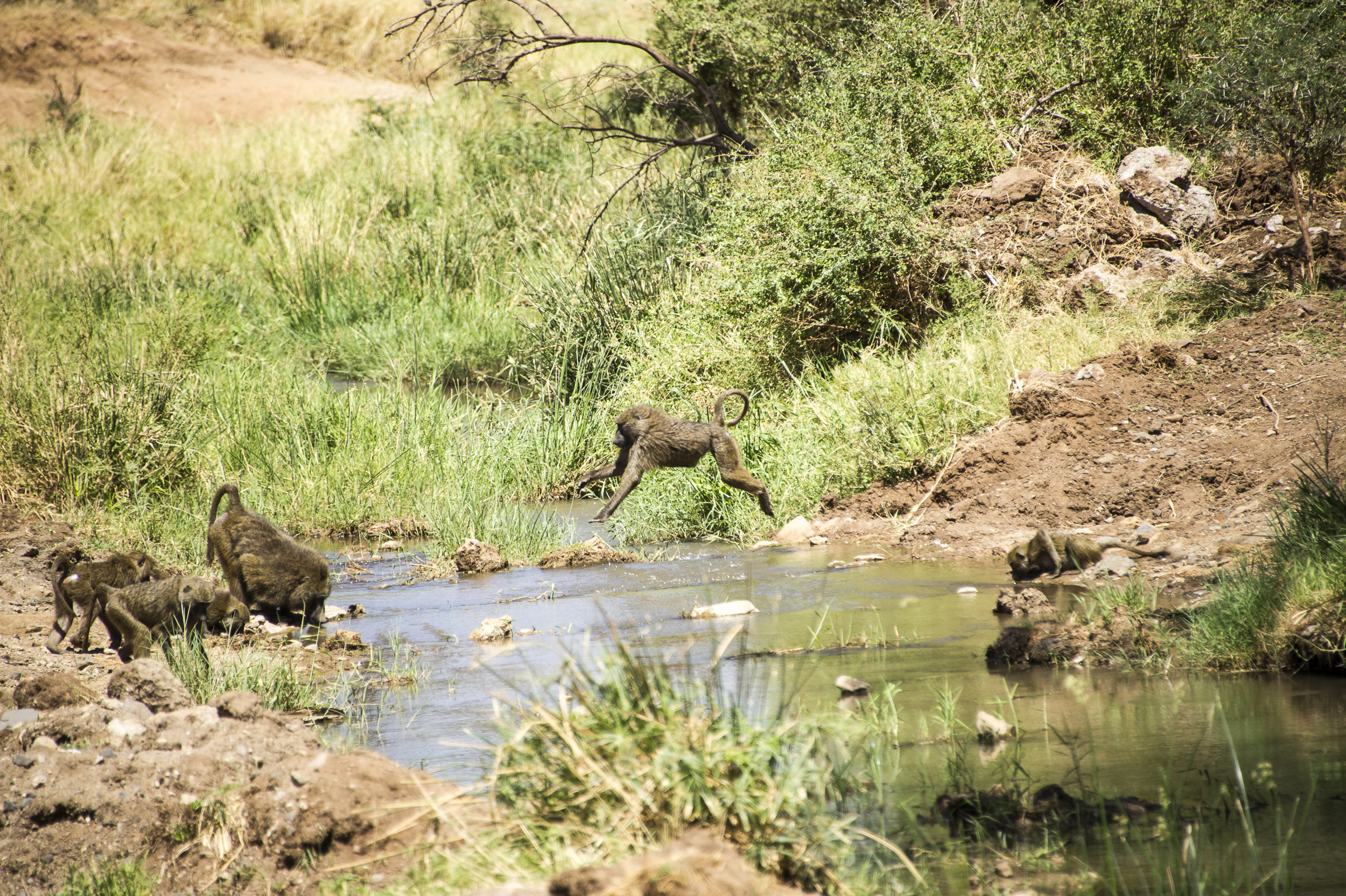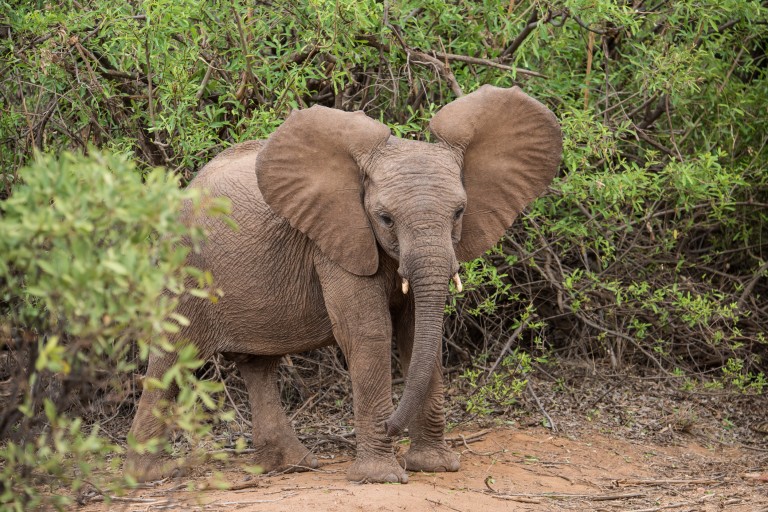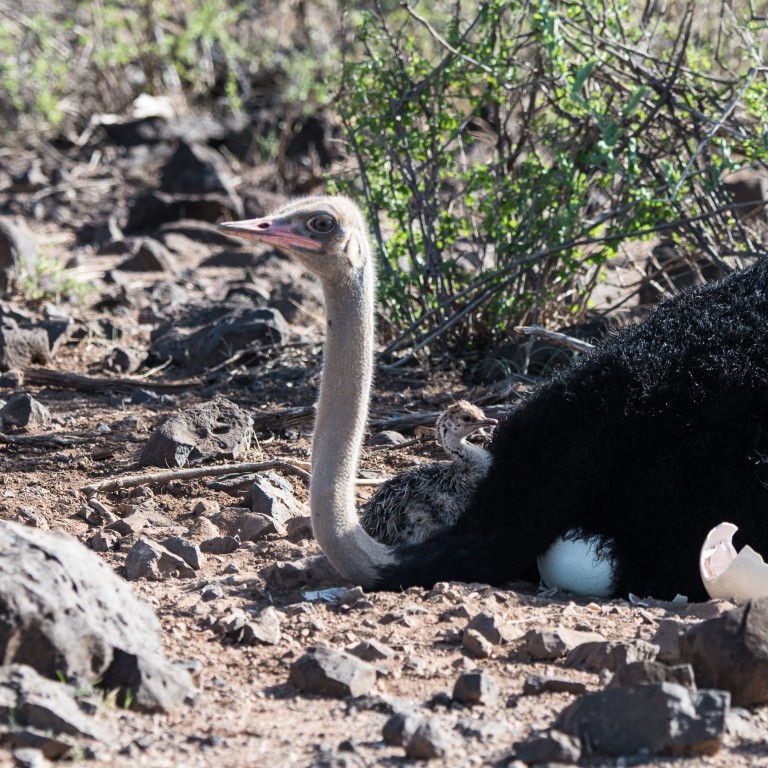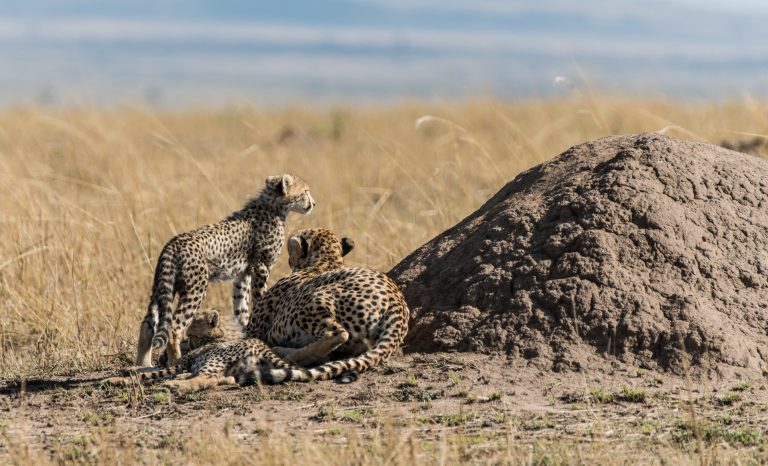Two kills in one afternoon!
It was great to be back at Brian Freeman’s camp ( (Freeman Safaris) a few people had moved on but there were still several staff from my last visit and there is something special about being greeted by people who know you. Settling in, having lunch, meeting the other guests – yep it definitely felt like coming home.
We went out on the afternoon drive full of hope and what an afternoon it turned out to be. Cheetah feeding on a kill, lionesses with cubs, lionesses taking down a buffalo, and tiny leopard cubs … all in one afternoon!!
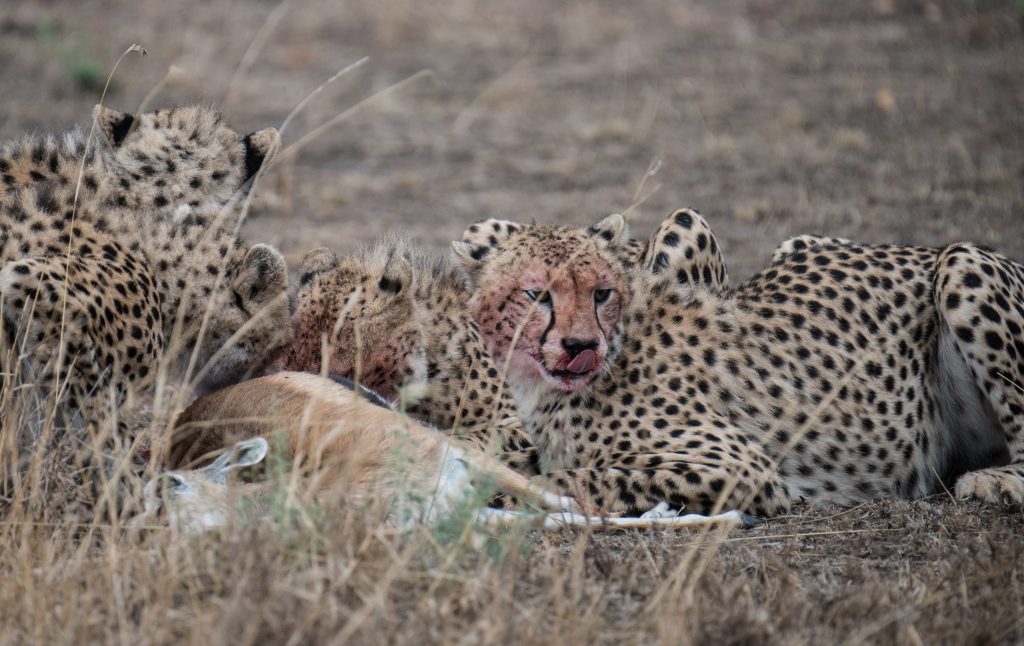
I appreciate that this post may not be for some people because it deals with carnivores feeding so a lot of the content from here on in will be gory. If that is you close this post now and pick another. For me it is how it is meant to be and I find this thrilling if I am lucky enough to encounter it on safari. For example, I think the blood covered face of this cheetah as it licks its nose is awesome. It has been burrowing deep into the carcass. These three male cheetah will have hunted together and are sharing the spoils.
There is nothing elegant about mealtimes. The important thing is to eat before another animal comes to rob them of their hard won meal. Hyenas in particular will hassle until the cheetahs give up and leave. It took a lot of energy to catch and kill so its critical to get sustenance. It requires a lot of effort to tear up the carcass into manageable pieces too. There is mixture of competition and collaboration in this tug of war.
I love the last photo because it so clearly shows the hairs standing up on the cheetah’s neck. When they are very young they are almost completely fluffy like this. In the adult these neck hairs are mostly flat and tend to be raised when there is trouble around. We say the hairs on our neck stand on end – here it is in the wild.
The number of vehicles watching the cheetah built up so we decided to move on. In a very short time we came across this family group of lions. I believe that it is only a part of a pride. There were two lionesss and three cubs enjoying the early evening sun.
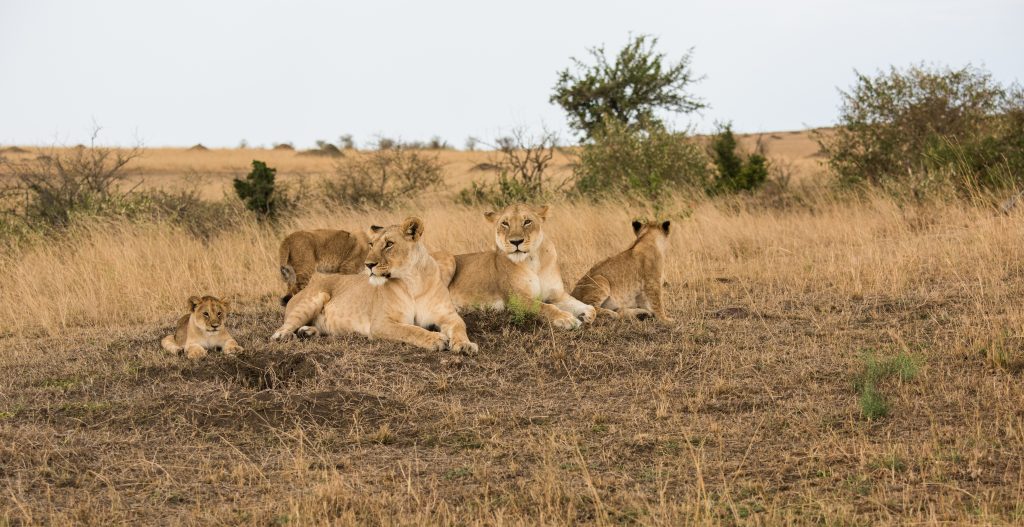
The cubs were quiet at first and there are a couple of portraits that I like. I like the two sitting behind each other because it has a nice balance to it and I was pleased to catch the cub coming back to its mother and rubbing itself under her chin as it sat down. (These are probably best seen as a gallery. Click on the first picture.)
While we watched them the temperature started to drop and the cubs became more active. They were using long tough pieces of grass and subduing them with their paws and teeth. They weren’t eating them – they would get them down to the ground and then let go so the grass sprang back up. Sometimes they would fight over a piece or carry a piece a short distance.
While we were watching the cubs playing, we became aware that the lionesses had suddenly become alert and they were surveying the area behind us. There were some gazelles grazing but a they were a long way off. The intensity of the lionesses concentration, however, suggested they had seen something closer that we had not spotted.
They split up and made their way past us and down onto the plain below us. The cubs stayed where they were although they did move closer together and settled down. Out on the plain we could track both of our lionesses moving steadily and fully focussed.
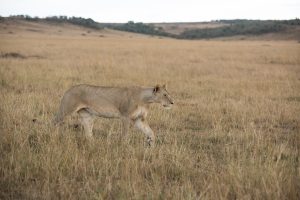
Following their focus, we suddenly spotted their target in the long grass. It was a lone buffalo. Watching it we could see that it was slightly lame but it was solid and a good size. Being lame might make it easier for them to catch it but they still needed the power and strength to take it down and kill it.
Their positioning became slower and increasingly precise. Briefly a third lioness was visible in the long grass much closer than the two we had been tracking. The buffalo continued its slow trek and seemed unaware of the approaching danger.
At the very last minute the buffalo spun around to face its attackers. While two of them were directly behind it the third was positioned to the side. They are hard to pick out in the long grass and the light was going.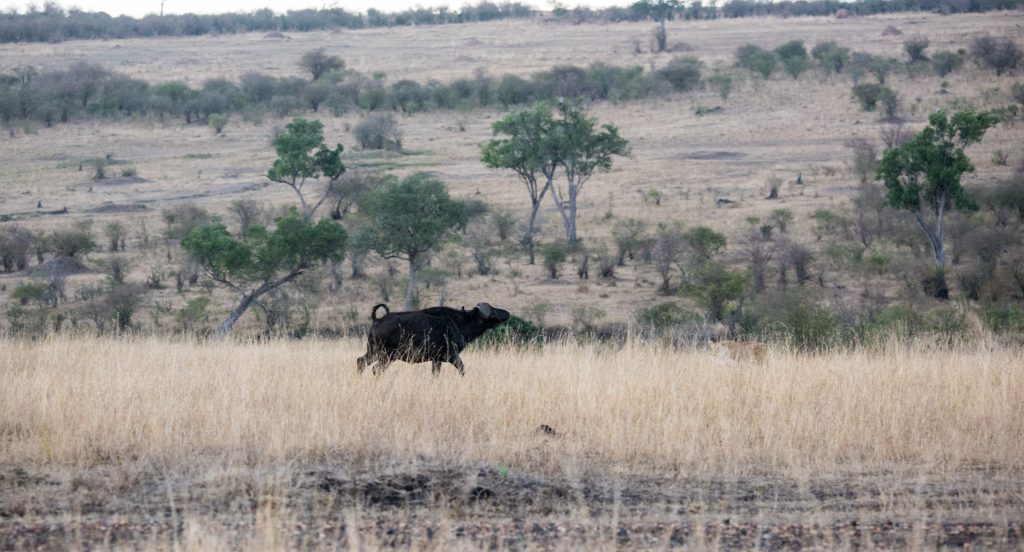
The horns are a serious hazard for the lions and the buffalo was able to keep them at bay for sometime. But having strength in numbers, the lionesses were able to distract it and suddenly one lioness leapt onto its back.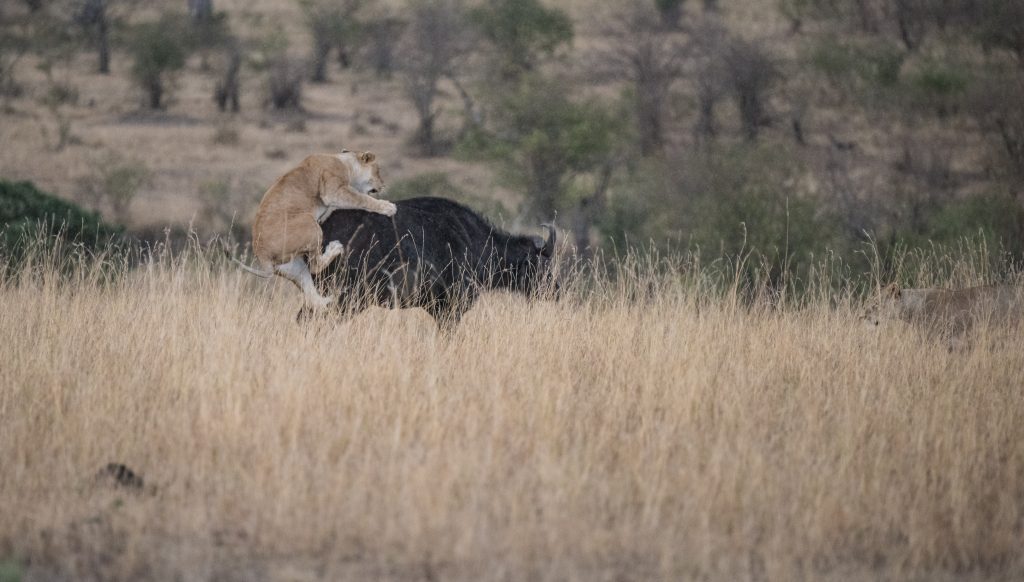
You can see that she is effectively hanging on with her front claws and climbing up with her back legs. There was immense power in her action. What you can’t see is that the buffalo is bucking and swinging around all the time.
She hangs on, widening the grip of her front legs and trying to pull the buffalo over. The other lionesses are stood in the long grass to the right. It is important that they stay out of reach of the thrashing horns and time their assistance just right. They will need maximum strength and weight when the buffalo hits the ground. With larger buffalo, I have seen several lions jump on it at the same time but you can see that here there is not enough room for more than one to get a good purchase.
She hangs on valiantly and eventually the buffalo’s legs buckle and as it goes down the others quickly get on it to keep it safely pinned down. It needs all three of them to keep it down. Even though it is injured it will make repeated efforts to shake them off and free its head.
The buffalo neck is too wide for her to break it so she presses on the windpipe with her leg and covers the nostrils with her mouth to suffocate it. The other two lie on the body. They pull it over so the legs cant get purchase or injure them. At one point the lioness has to hold the buffalo’s front legs while continuing to suffocate it.
Although the buffalo looks finished in the still photo it is still gasping the occasional breath and making noises and tensing and flexing its muscles. When you see a kill on a TV wildlife programme you see it edited and not real time. It took 33 minutes from when the buffalo hit the ground to when it took its final breath. (More than half the time available in a TV programme!) And it takes one final enormous effort by the lead lioness. She takes the whole nose and mouth into her mouth.
Once the buffalo was on the ground the cubs suddenly appeared but they stayed away from the kill until the lead lioness had finished. They were playing very close by in the long grass – stalking each other and pretending to kill.
Once the buffalo was dead the lead lioness had a little to eat but soon stood up and walked away, still breathing very heavily. Then the cubs went to her and one of the cubs started to leap on her as if she was prey.
It was easy to see how they were experimenting with techniques. Looking closely at the next picture you can see how the cub has left claw marks in the lioness coat as it slid down.
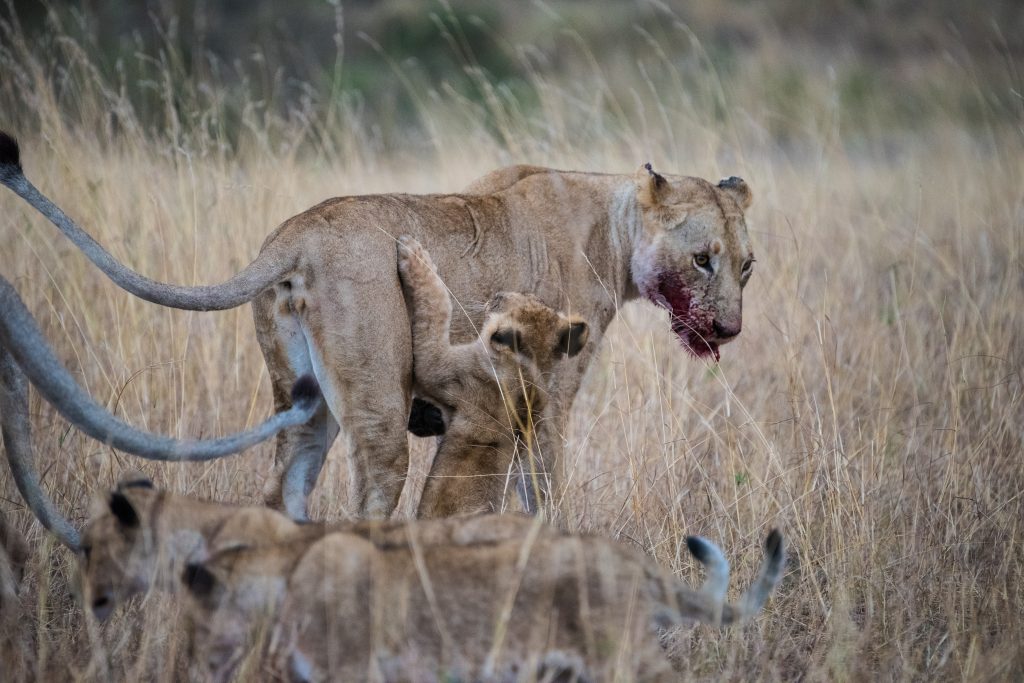
This play and experimentation then moved to the carcass. They took care not to interrupt the other feeding lionesses but they nibbled at the nose and mouth of the buffalo, took up positions on the back that were strikingly similar to those taken by the lioness in the hunt.
We watched for some time but it was getting dark so headed for home. There was one last treat. A short distance from camp a leopard had two very young cubs. They were still holed up in the den but we stopped by – just in case and were rewarded by them coming out. They were tiny and rather tentative. We were a long way from them and it was getting dark so the only way to get anything was to use very high ISO. So you will need to look very carefully but they are there!
